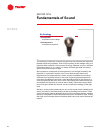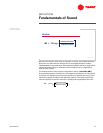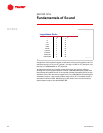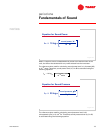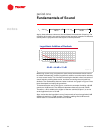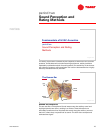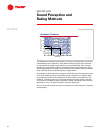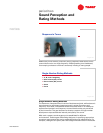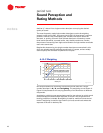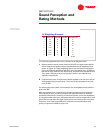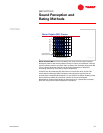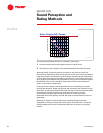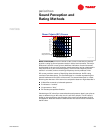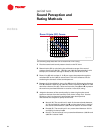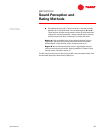
18 TRG-TRC007-EN
notes
period two
Sound Perception and
Rating Methods
shall be X,” where X is a single-number descriptor conveying the desired
quality of sound.
The most frequently used single-number descriptors are the A-weighting
network, noise criteria (NC), and room criteria (RC). All three share a common
problem, however: they unavoidably lose valuable information about the
character, or quality, of sound. Each of these descriptors is based on octave-
band sound data which, as noted earlier, may already mask tones. Further,
the process of converting from eight octave bands to a single number overlooks
even more sound data.
Despite this shortcoming, the single-number descriptors summarized in this
clinic are valuable tools for defining sound levels in a space, and are widely
used to specify the acoustical requirement of a space.
One simple method for combining octave-band sound data into a single-
number descriptor is A-, B-, or C-weighting. The weighting curves shown in
Figure 23 compensate for the varying sensitivity of the human ear to different
frequencies.
A-weighting, which is most appropriately used for low-volume (or quiet) sound
levels, best approximates human response to sound in the range where no
hearing protection is needed. B-weighting is used for medium-volume sound
levels. C-weighting is used for high-volume (or loud) sound levels where the
response of the ear is relatively flat.
relative response, dB
relative response, dB
frequency, Hz
frequency, Hz
50
50
100
100
200
200
500
500
1,000
1,000
2,000
2,000
5,000
5,000
20
20
10,000
10,000
-
-
40
40
-
-
30
30
-
-
20
20
-
-
10
10
0
0
A
A
B
B
C
C
frequency responses for sound
frequency responses for sound
meter weighting characteristics
meter weighting characteristics
A–B–C Weighting
Figure 23



